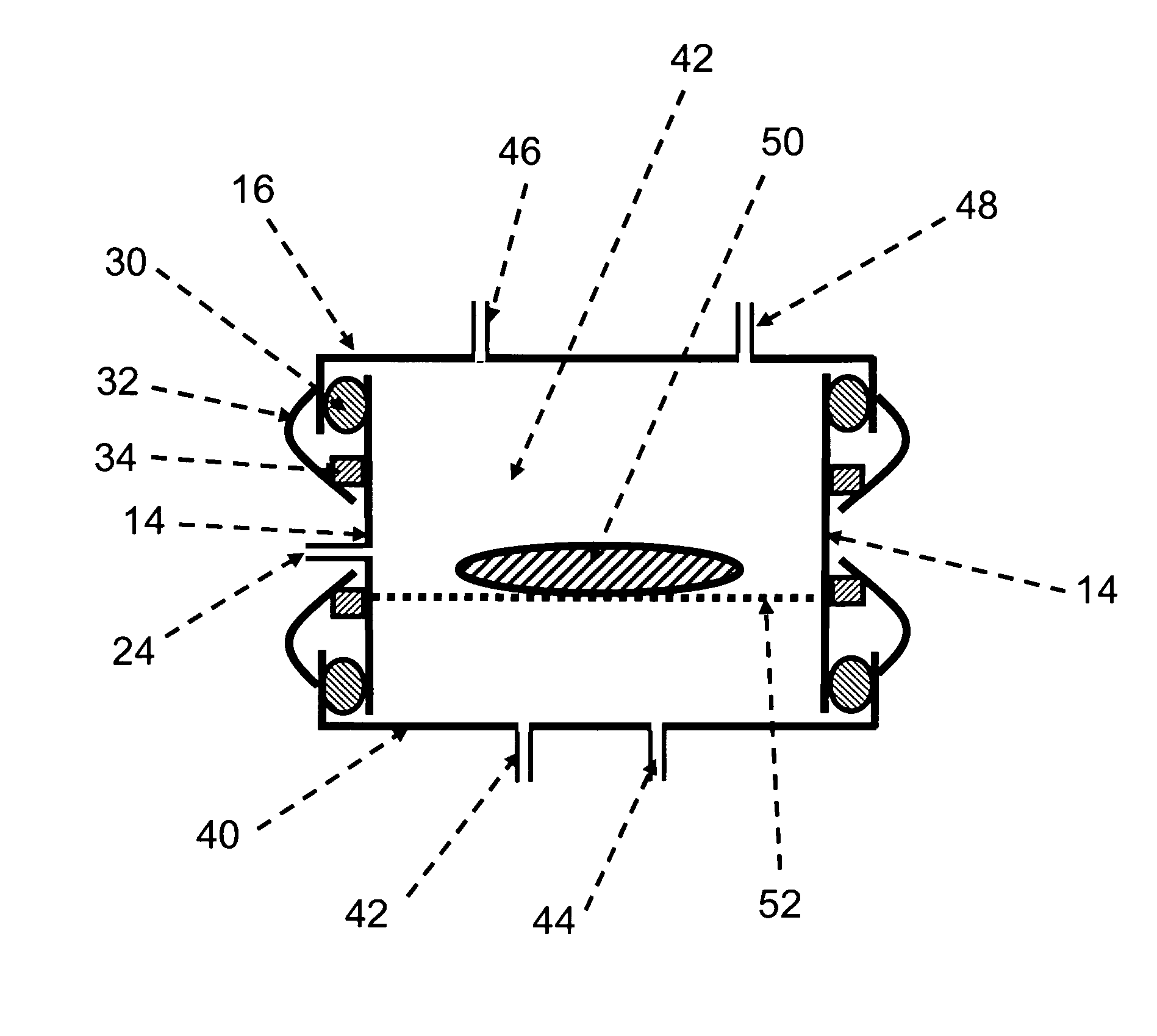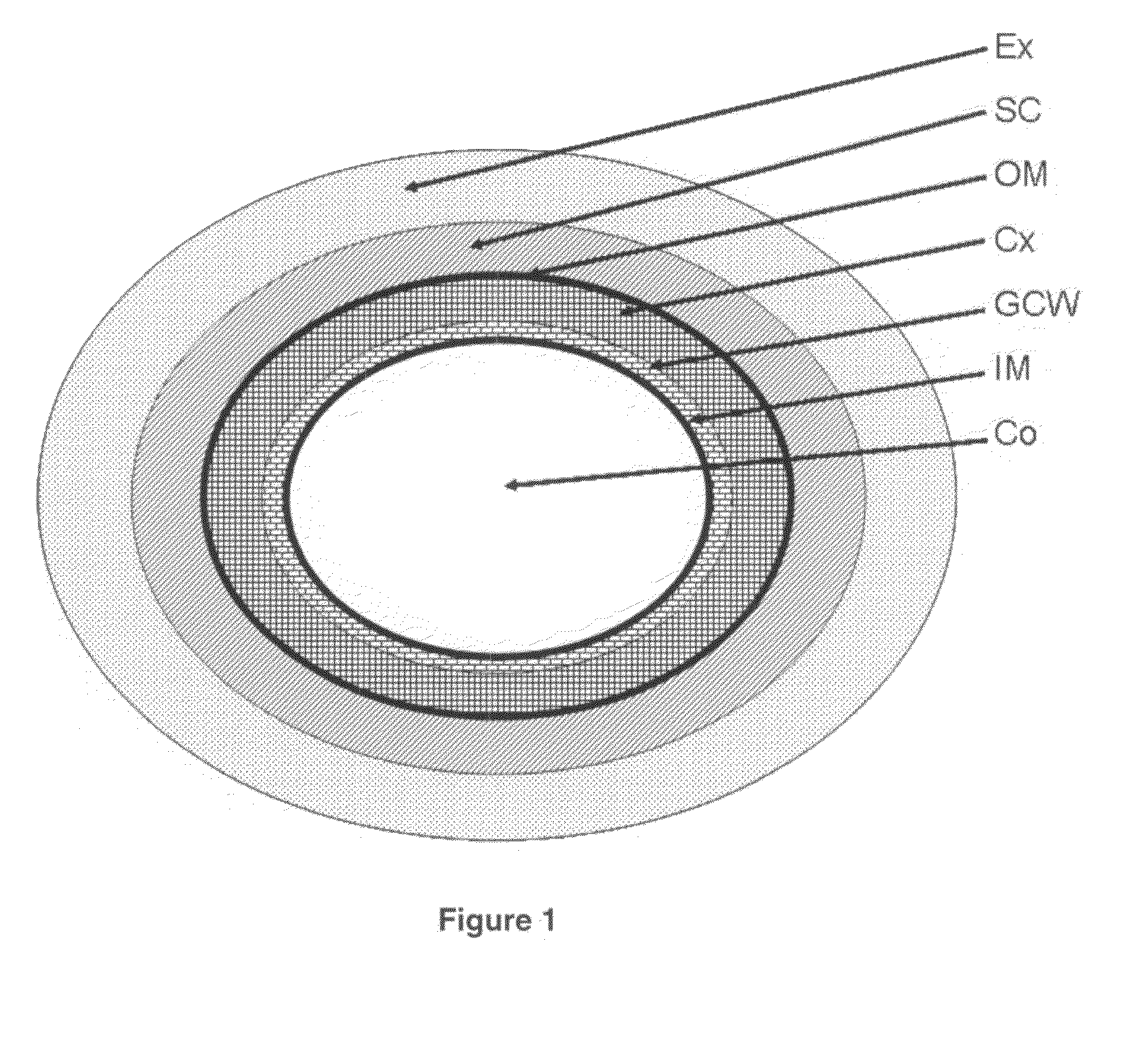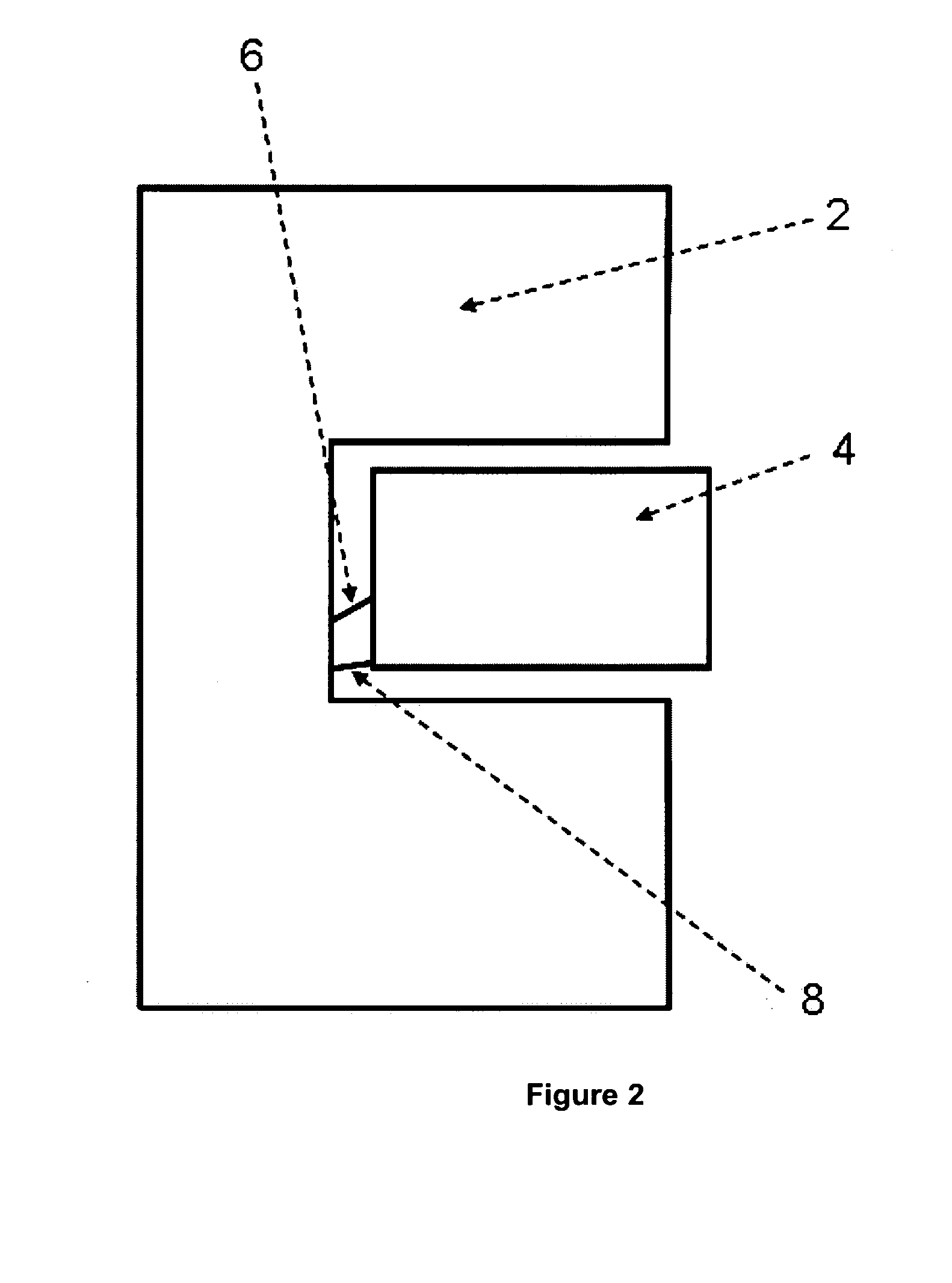Method and apparatus for two-step sterilization
a two-step sterilization and apparatus technology, applied in the direction of disinfection, mechanical vibration separation, construction, etc., can solve the problems of increasing complexity, affecting the sterilization effect, and a large number of items that are also more fragile and difficult to sterilize,
- Summary
- Abstract
- Description
- Claims
- Application Information
AI Technical Summary
Benefits of technology
Problems solved by technology
Method used
Image
Examples
example 1
[0076]Experiments which failed to provide a gentle, rapid disinfection. Bioburden reduction was tested by using a commercial stainless steel disk with 1-2 million spores of Bacillus atropheus (Raven Biological Laboratories) according to the manufacturer's protocol. Similar disks can be obtained from several suppliers, and such disks are known in the art, as they are used e.g in US-FDA approved methods for testing sterilizers intended for use in health care facilities. Standard procedures were modified accordingly. Unless stated otherwise, such disks where used in the present and the following examples as standardized and defined test item and / or source of spores.
[0077](A) The initial test using humid air with more than 80% rel. humidity at a temperature at 55° C. to 60° C. and a ozone concentration of 20 PPM. This process did not reduce the bio burden significantly, as 400000-700000 cfu survived.
[0078](B) Experiment with water containing 10 ml of 4 mM L-alanine as substrates for res...
example 2
[0080]Rapid and non-corrosive sterilization was achieved by submerging a stainless steel disk with Bacillus atropheus spores from Raven Biological Laboratories in an aqueous solution containing enzymes at 50° C. This solution was obtained by dissolving 4 g / l of a commercially available tablet for household dishwashers purchased from Dansk Supermarked Indkøb A / S), containing more than 30% phosphate, 5-15% bleaching agents and less than 5% of proteases and amylases. The solution, in which the steel disk was completely submerged, was sonicated in an ultrasonic bath for 15 minutes in order to provide mixing of the fluid comprising the steel disk. Vortexing at 250-350 rpm on a shaker table could be used as well in order to provide a desired mixing effect. Thereafter, the object was flushed with demineralized water at 25° C. for 10 seconds and dried with air (˜50% relative humidity) at 20-25° C. for 10 seconds. The dried object was treated with ozone in sterile-filtered ambient air (˜50% ...
example 3
[0081]A material compatibility test was performed to investigate ozone's corrosivity with respect to materials commonly used for medical equipments, such as ultrasound transducers and flexible endoscopes. Following materials were selected as representatives of different groups of materials: ABS polyurethane TPX, silicone, neoprene rubber and PVC. Materials were tested in a chamber with 40 to 50 ppm (parts per million) ozone at 25° C. to 40° C. for 80 hours subjected to cycles of one hour in ozone and one hour in air. There were no visible damages or changes to the surface of the material compared to untreated control samples.
PUM
 Login to View More
Login to View More Abstract
Description
Claims
Application Information
 Login to View More
Login to View More - R&D
- Intellectual Property
- Life Sciences
- Materials
- Tech Scout
- Unparalleled Data Quality
- Higher Quality Content
- 60% Fewer Hallucinations
Browse by: Latest US Patents, China's latest patents, Technical Efficacy Thesaurus, Application Domain, Technology Topic, Popular Technical Reports.
© 2025 PatSnap. All rights reserved.Legal|Privacy policy|Modern Slavery Act Transparency Statement|Sitemap|About US| Contact US: help@patsnap.com



